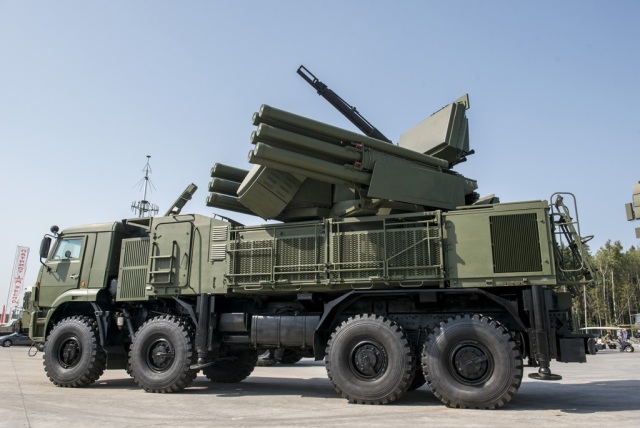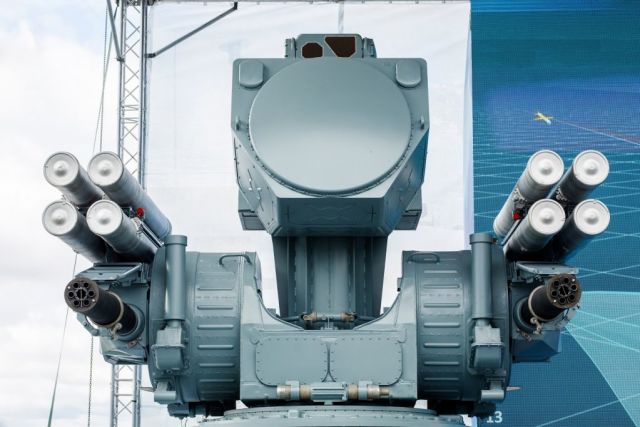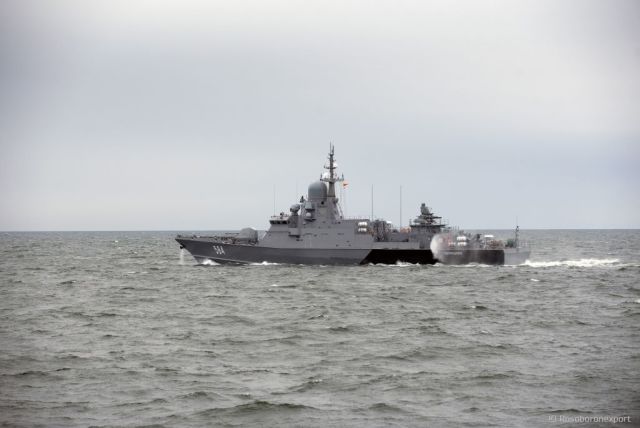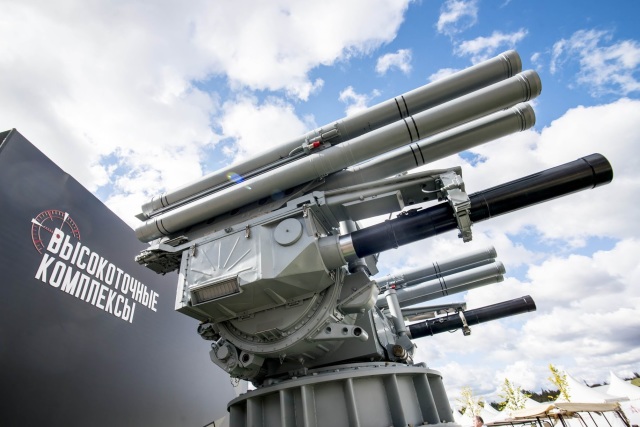This November marks the tenth anniversary of the commissioning of one of the most successful developments of the Tula Instrument Design Bureau in recent years − the anti-aircraft missile and cannon complex "Pantsir-C". The system is supplied to Russian troops and abroad, and is constantly being upgraded.
The marine version of the Pantsir-ME inherited all the advantages of the basic product and has recently been mass-produced for installation on ships of the Russian Navy. About why the "Shell" is called a unique ZRPC, and what are the features of the marine modification − in our material.
Universal cover
On November 4, 2012, by order of the Chairman of the Government of the Russian Federation D.A. Medvedev, the Pantsir-S1 ZRPC was adopted by the Armed Forces of Russia. This was preceded by a long period of development and testing that fell in the 1990s - a time of crisis in the history of the country's military−industrial complex. The main task of the "Shell" is the close cover of various military and civilian objects from attacks by any modern means of air attack, including UAVs.
The uniqueness of the complex lies in the placement of means of detecting and hitting targets on one platform, thanks to which a security dome with a radius of tens of kilometers is created over the protected object with small resources. In addition, the "Shells" are able to unite in groups, increasing the protective coating.

ZRPC "Pantsir-S1"
The Pantsir-S1 complex can be placed on a tracked and wheeled chassis, as well as installed permanently. The fire is conducted by two double-barreled 30-mm guns and 12 anti-aircraft guided surface-to-air missiles. A phased array radar (FAR) is responsible for detecting targets. The radar accompanies both targets and launched missiles of the complex.
The most modern modification of the Pantsir-S1M complex, first presented at the Army-2021 forum, is capable of detecting aerial targets at a distance of up to 80 km. Thanks to a new missile and an updated radar with mm-band headlights, the range of destruction has been increased to 30 km. The firepower of the Pantsir-S1M is achieved by a combination of rocket and cannon weapons, high reaction speed and the ability to search for and defeat targets in motion.
"Armor" for sea wolves
In 2015, KBP specialists developed a naval version of the weapon based on the Pantsir-S model. For the first time in our country, the Pantsir-ME complex was shown at the St. Petersburg International Naval Salon in 2017, and two years later, abroad - at an exhibition in Abu Dhabi.
The main difference of the marine model is in the armament. On the "Pantsir-ME" instead of two double-barreled guns, two 30-mm six-barreled submachine guns are installed, which made it possible to increase the rate of fire by about two times. The number of missiles has decreased – 8 against 12 on the land version, but at the same time 32 more missiles are stored below deck.

The missiles are adapted to work on surface targets, which most often fly at a low altitude of 2 m, while the maximum height of the defeat is 15 km, and the distance is 20 km. Heavy machine gun fire destroys closer and smaller objects at a distance of up to 4 km and an altitude of up to 3 km . The Pantsir-ME can fire at four targets at once.
The complex uses a highly intelligent multi-mode adaptive radar-optical control system. Only two people are responsible for the work of the marine "Shell" – the operator and the commander of the combat module, while the complex has a high level of automation. The combination of radar and optical systems allows the complex to be used in any conditions, including at night.

The Odintsovo small rocket ship. Photo: Rosoboronexport The first ship equipped with the Pantsir-ME missile defense system was the Odintsovo small rocket ship of Project 22800 launched in 2018, serving in the Baltic Fleet. The complex can be installed on ships of various classes with a displacement of 300 tons, including foreign production, which opens up wide export prospects for it.



